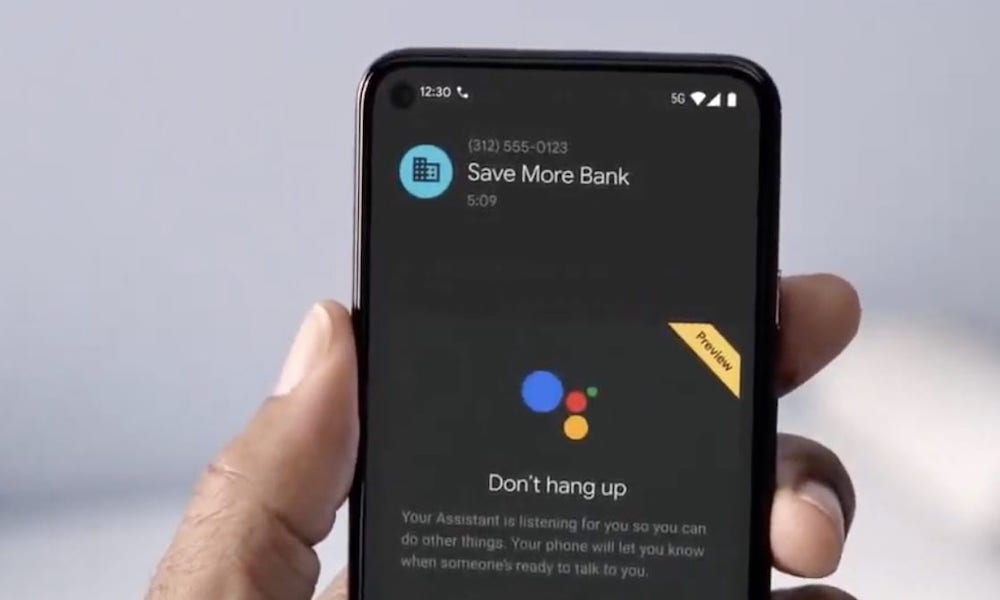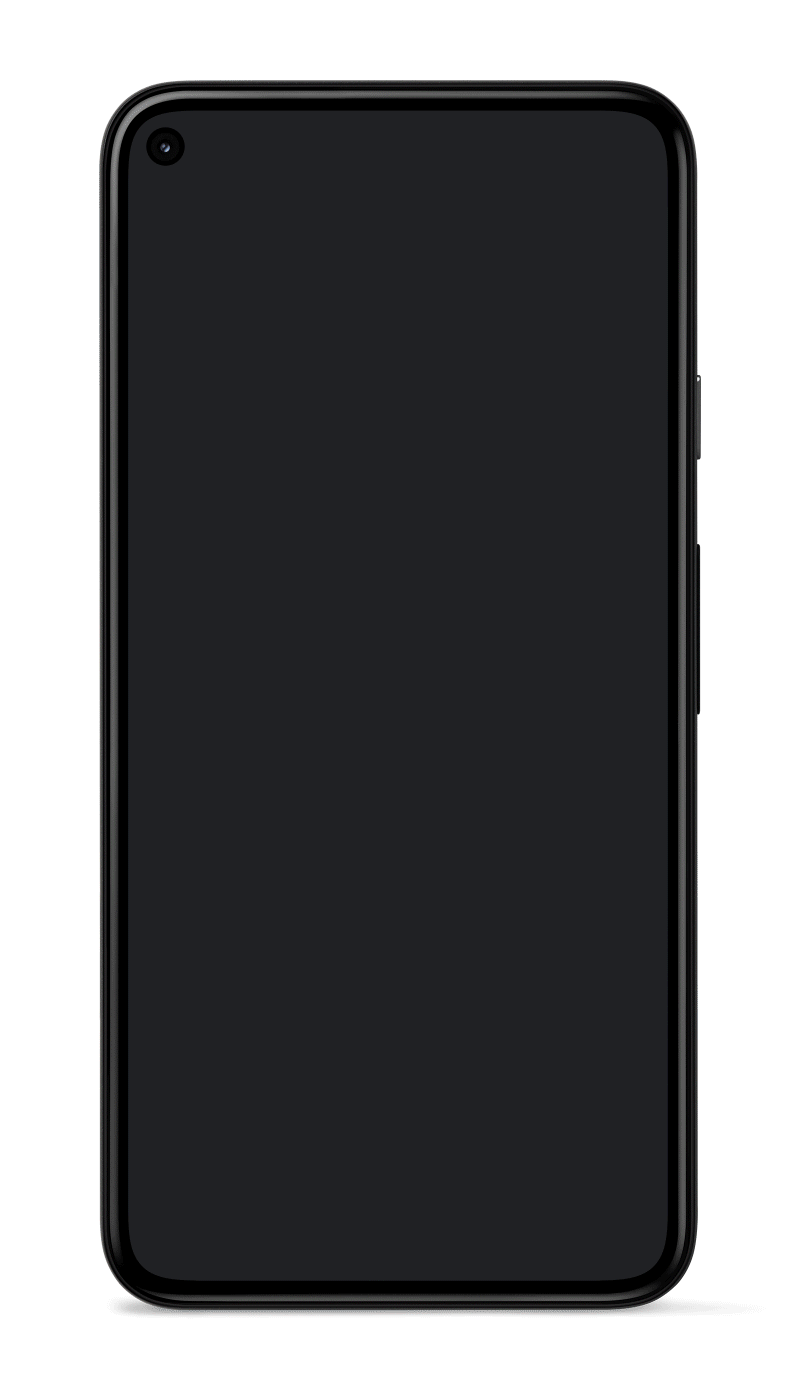New Google Pixel 5 AI Technology Holds Your Place in Line
 Credit: Google
Credit: Google
Toggle Dark Mode
At this point, we’ve known for a while that Apple has been planning to delay the debut of its new iPhone 12 lineup into October, and with that in mind, Google obviously decided that it wanted to get in just under the wire to be able to claim a September release for its new Pixel 5, debuting its latest flagship smartphone alongside a few other new products and features almost literally at the eleventh hour of the month last night.
Google is taking a somewhat different direction with its flagship Pixel smartphone this year; the company’s hardware chief declared that the world doesn’t need “another $1,000 phone” right now and released the Pixel 5 at the $700 price point, essentially pitting it not against Apple’s flagship iPhone 12 Pro lineup, but rather in direct competition with the baseline iPhone 12.
The goal, according to Google VP Rick Osterloh, was to deliver an affordable 5G smartphone, but Google also knows what side of the bread its butter is on, and this latest model builds on the success of the Pixel 4a and Pixel 3a that came before, not to mention the fact that it’s also Apple’s mid-tier iPhone models — the iPhone XR and iPhone 11 — that have dominated smartphone sales for the past two years, so Google has clearly come to the conclusion that this is the market to be in.
As with most of Google’s recent phones, however, the magic behind the Pixel 5 isn’t even so much in the hardware, which is actually now a bit underwhelming compared to last year’s Pixel 4, but in the software features that Google continues to develop for its own first-party Android implementation.
‘Hold for Me’
Google has actually been leading the way in AI-based telephony services over the past couple of years, most notably with the unveiling of its Call Screen and Google Duplex AI features a couple of years ago, which empowered Google Assistant to act as a personal secretary, answering and screening incoming spam calls for you and even placing outbound calls to local businesses to make reservations on your behalf.
While Duplex hasn’t necessarily taken off as widely as Google hoped yet — it was a bit of a “moonshot” feature, after all — it’s clear that the Android maker is sticking with its strengths in this area with the Pixel 5, introducing a new Hold for Me feature that promises to save smartphone users for the rigours of elevator music.
As with Duplex, Hold for Me is powered by Google Assistant, but with a far less ambitious goal. It doesn’t attempt to strike up a conversation with somebody on the other end of the phone, but rather just listens quietly to try and identify when the hold music ends and an actual human comes on the line. While it’s still a task that needs some level of artificial intelligence to handle with the kind of accuracy that it needs to be ready for prime time, it’s a much more straightforward concept.
Hold for Me will come built into the Phone app on the newest Pixel phones, offering up a button to activate the feature during specific calls — although for whatever odd reason Google has chosen to limit it to calls to toll-free numbers only, so it won’t necessarily be available when calling local businesses.
Once the feature is activated, the phone will be muted and Google Assistant will kick in with on-device audio analysis to try and detect when an actual customer service rep comes onto the line, and alert you to this fact while also asking the person to please hold while you return to the call. Real-time captions will also be shown on the phone’s screen so you won’t feel like you’re waiting completely blindly.
The feature is actually powered by the same Duplex technology as Google’s automated reservation system, but arguably to a much more useful end.
As the company notes, there’s a lot of variations on how “hold loops” work in different businesses, and it’s also important for the AI to be able to understand the difference between the usual recorded “Hello, thank you for waiting…” prompts and the arrival of an actual human on the other end of the line.
Google also emphasizes that not only is everything processed on Pixel itself, so no audio is shared with Google, but also that the audio recording stops once you actually return to the call, so at the very most Google Assistant is just listening to the hold music for you anyway — and even that’s not being sent to Google’s servers unless you specifically offer to share it in order to help Google improve the service.
There’s no word yet on whether Google plans to offer Hold for Me as part of a software update for older Pixel phones, or even extend it to other Android handset makers, but for now, it’s only available in a preview that will be limited to the Pixel 5 and the newest 5G-capable Pixel 4a.
What Else Is New?
This year it’s clear that Google is focusing on new software features for its Pixel phones, and while Hold for Me is arguably the most innovative and exciting among them, its also added several new camera features, such as a “Cinematic Pan” setting for smoother panning shots, new video stabilization modes, and — in a move that clearly sounds like it’s borrowing from Apple — AI-powered portrait lighting along with portrait mode shots that work in its Night Sight mode.
There’s also an “Extreme Battery Saver” mode that Google claims will allow you to make your battery last for up to 48 hours, which seems like a big stretch beyond the iPhone’s Low Power Mode, although it’s unclear what compromises users may have to make for those kinds of power savings.
In terms of the hardware, however, the Pixel 5 is not the big upgrade to the Pixel 4 that some were hoping for.
Google has taken a step back in order to produce an affordable flagship here, actually removing features from last year’s flagship, including the Motion Sense camera and Google’s facial recognition unlock along with it.
It’s also powered by Qualcomm’s lower-tier Snapdragon 765G, rather than the current leading-edge Snapdragon 865 series, which means it’s not even trying to match the performance of the A13 chip in last year’s iPhone 11, much less than the A14 that Apple debuted with the new iPad Air last month and will almost certainly be packed into all of the company’s iPhone 12 models.
As with most of Google’s Pixel phones, however, the cameras have gotten a nice bump; although it’s still limited to only two rear cameras in an era when many rival Android handsets offer three or more, the new shooters are a 12.2-megapixel main camera with a 77-degree field of view and a 16-megapixel ultra-wide, while the front camera comes in at 8 megapixels.
The Pixel 5 also features a 90Hz refresh rate on its OLED display, and although rumours were that Apple was hoping to bring new ProMotion 120Hz screens to at least some of this year’s iPhone models, it now looks like that won’t be happening this year.
Google has also released a 5G-capable version of its Pixel 4a that launched in the summer, which blurs the lines even further since the new Pixel 5 isn’t that substantial of an upgrade in terms of features and performance.
Instead, Google is setting the two models apart through things like IPX8 water resistance, reverse wireless charging, and the use of the newest Corning Gorilla Glass 6.
The Pixel 4a 5G starts at $499, however, with a 6.2-inch display, so it could very well end up giving the 2020 iPhone SE a run for its money.
Ultimately, however, even though the Pixel 5 is going to be trying to compete at the same price point as the standard iPhone 12 models, it seems to have left a larger gap in terms of features and performance specs. Apple’s iPhone XR and iPhone 11 have never been crippled versions of its actual flagship models, and in fact have featured the exact same processors, and basic features, differing only in fairly obvious things like screen technology and camera capabilities.
Apple’s entry-level iPhone 12 will almost certainly feature the same A14 chip as its Pro models, not to mention features like Face ID and an even further improved camera system, and by all reports this year it’s almost certainly gaining an OLED screen too.







